Anthracocentrus arabicus (giant Arabian longhorn beetle)
Anthracocentrus arabicus is a rare beetle belonging to the family Cerambycidae (longhorn beetles) found in the Arabian peninsula and across desert regions of Africa.
It is one of the largest species of longhorn beetle in the Palaearctic, with females reaching a length of up to 95mm.
It is a species that is restricted to deserts, but only in areas where trees are present, which the beetles depend upon for their development and for the completion of their life cycle.
The beetles probably lay eggs in the roots of trees such as ‘ghaf’ (Prosopsis) and acacia in sandy areas, and the larvae feed upon the roots before pupating underground and later emerging as adults.
Once the adults emerge, they are active at night and live only for a few weeks, during which time they do not feed - their only purpose is to find a mate and reproduce.
The males and females of this species differ from each other, with males possessing longer mandibles. This is especially evident in large male specimens which have disproportionately large mandibles.
Species detail
-

Taxonomy
Anthracocentrus arabicus is a large long-horn beetle. Discover where some its giant relatives can be found.
-

Distribution
Anthracocentrus arabicus is widespread in western Palaearctic desert regions, mainly in open forests of ghaf trees. Find out more.
-

Biology
These beetles are nocturnal and roam at night looking for mates. During the day they hide under bark and stones avoiding the sun. Discover where the females lay their eggs.
-

Behaviour
Female Anthracocentrus arabicus are less abundant and often larger, than males. Discover how the male beetles use their fierce mandibles.
-

Conservation
This species is not currently endangered, but relies on conservation of suitable wooded areas for its survival.
-

References
Get reference material for Anthracocentrus arabicus.
Images
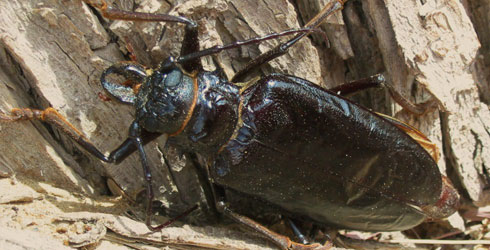
Female Anthracocentrus arabicus hiding under bark by day.
© Conrad P D T Gillett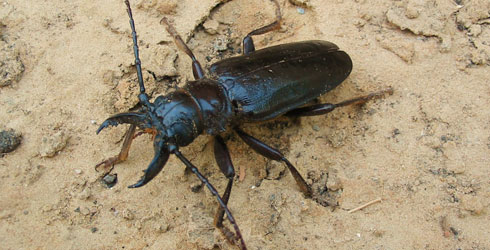
Male Anthracocentrus arabicus in threat posture.
© Conrad P D T Gillett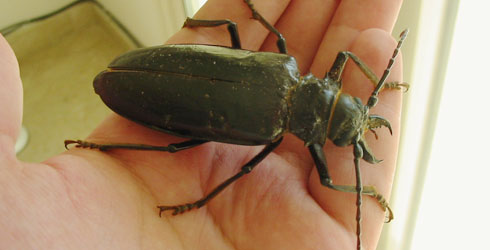
Female Anthracocentrus arabicus being held to indicate relative size.
© Conrad P D T Gillett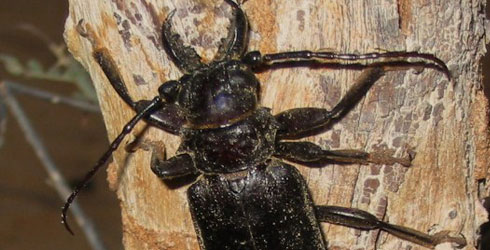
Male Anthracocentrus arabicus climbing a tree at night.
© Conrad P D T Gillett
Female Anthracocentrus arabicus in the desert.
© Conrad P D T Gillett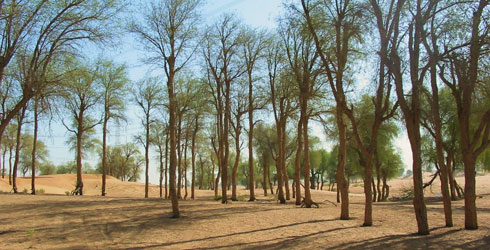
Ghaf tree woodland in the United Arab Emirates - habitat for Anthracocentrus arabicus.
© Conrad P D T Gillett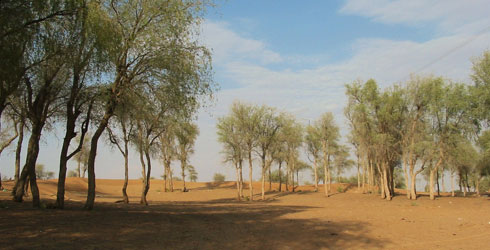
Ghaf tree woodland in the United Arab Emirates - habitat for Anthracocentrus arabicus.
© Conrad P D T Gillett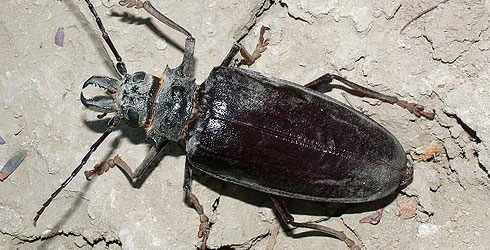
Female of the related species Anthracocentrus rugiceps from Iran.
© Martin RejzekAbout the author
A word from the author
"The larvae of Anthracocentrus arabicus remain completely undescribed and unknown - we do not even know for certain if they feed on living roots, dead roots or even roots at all! Although this beetle is reputed to be attracted to and fly to lights at night, I have never seen or heard of one being found at lights; usually they are found rarely under bark and other objects."

